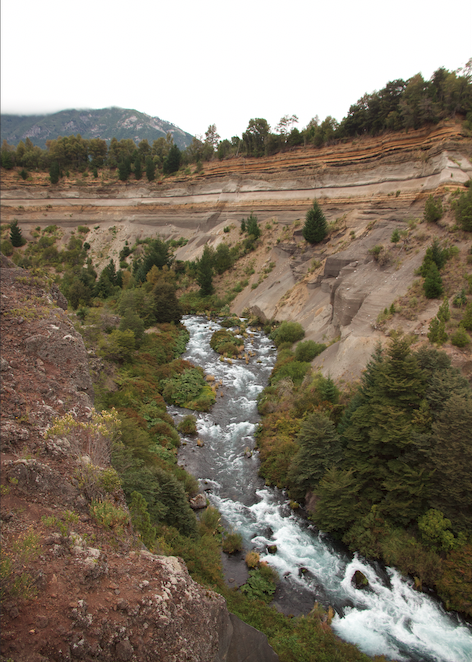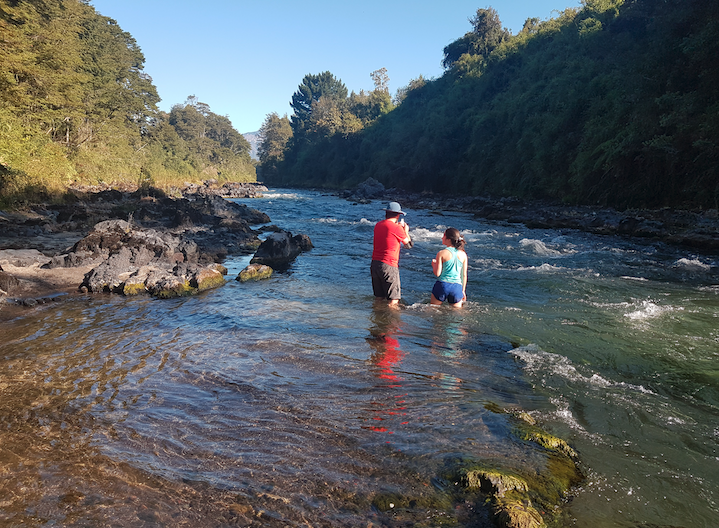Weathering rates in continental arc volcanoes
Weathering rates in the Southern Andes
Volcanic regions are hotspots for chemical weathering, being an important source of rock-derived nutrients delivered from streams to oceans and constitute hotspots for offsetting CO2 at geologic timescales. However, studies in continental volcanic arc regions are scarce. The Southern Volcanic Zone of the Andes has the potential to be a large contributor to global chemical weathering fluxes due to its longstanding volcanic activity (mostly basaltic to basaltic-andesitic) since the Late Miocene and its humid temperate rainforest climate with active hydrothermal systems. We aim to better assess the role of continental subduction regions in global weathering fluxes.

Rapids at the Truful river which flows downstream from Llaima volcano. The thick volcanic deposits are from the Curacautin ignimbrite.
Impact of hydrothermal activity in catchment hydrochemistry and nutrient exports
The SVZ is characterized by a large number of surface hydrothermal manifestations. Several of the Holocene volcanoes of the SVZ show hydrothermal activity, with fumaroles and/or solfataras, indicating the potential for geothermal gradients and reservoirs on the volcano surroundings. Most of these volcanoes feed relatively short rivers (~200–400 km) draining to the Pacific Ocean. We investigate the how these hydrothermal systems contribute to solute and nutrient budgets at the watershed scale and their delivery to the oceans.

The Nilahue river which drains the Cordon Caulle caldera.
